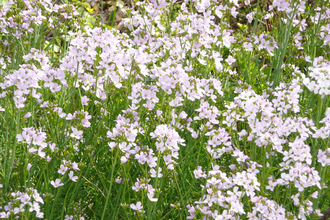No Mow May extended to No Mow- Let it Grow in June and July, and our lawnmowers stood idle and gathering dust. Verges around the county supported beautiful swathes of flowers and buzzing, bouncing insects. Just in case you haven’t fully appreciated how exciting not mowing can be, I’d like to showcase a few examples.
In my own garden, which has been a garden since Victorian times, I left patches of unmown grass, and others were cut on a cycle so there were different lengths of grass available through summer. Selfheal, germander speedwell, lady’s smock, ground ivy, red and white clover, mouse-ear, ribwort plantain, daisies, dandelions and buttercups all made good showings and were enjoyed by bees, hoverflies and butterflies. No rarities emerged, but the overall effect was lovely, and never descended into a panic-inducing messy wilderness.










